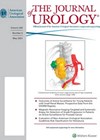
Journal Reviews
Factors and time to conversion from prostate cancer active surveillance to treatment
Active surveillance is the standard of care for men with low-risk and selected men with favourable intermediate risk prostate cancer. The aim is to reduce the morbidity and mortality of overtreatment of non-clinically significant prostate cancer. A significant proportion progress...
Active surveillance for small renal masses in younger patients
Active surveillance (AS) is discussed as an option for renal masses <2cm in patients with significant competing risks for mortality. This multicentre data from the US seeks to fill an important gap in current guidelines for provision of this option...
Increased use of active surveillance for men with intermediate risk prostate cancer
The optimal management of men with intermediate risk prostate cancer remains unclear and continues to be debated. The authors interrogate the US National Cancer Database for 176,122 men diagnosed with intermediate risk prostate cancer between 2010 and 2016. Of these...
Trade-offs between risks and benefits of localised prostate cancer treatments – the COMPARE study
We know little about the trade-offs men make when considering the oncological and functional outcomes of individual treatment options for localised prostate cancer, and decisions are often influenced by physician opinion. The likely compromised functional results are viewed as a...
What should we do with the incidentally detected renal cyst in a child?
The introduction of routine prenatal screening in the early 1980s resulted in paediatric urologists being confronted with the dilemma of what to do with antenatally-detected urinary tract dilatation, many of whom, we now know, do not require long-term surveillance or...








